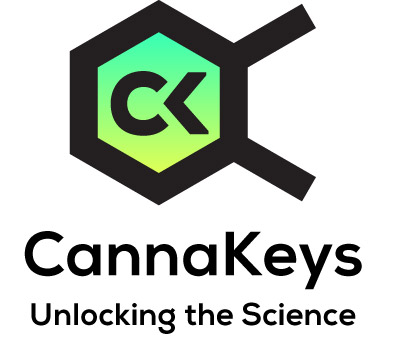What Makes GPR55 an Emerging Key Player in the ECS
The endocannabinoid system (ECS) has long been defined by its two primary receptors, CB1 and CB2, which mediate a wide range of physiological functions. However, ongoing research has identified GPR55, an emerging cannabinoid-sensitive receptor, as a possible “CB3” receptor. Although structurally distinct, GPR55 is increasingly seen as relevant in the cannabinoid health sciences, endocannabinoid medicine, and clinical care.
Why Isn’t GPR55 Officially Called CB3?
Despite its ability to interact with cannabinoids like THC and CBD, GPR55 has not been formally designated as CB3, and several key reasons explain why:
- Low genetic similarity: GPR55 shares only ~13–14% amino acid sequence identity with CB1 and CB2 (Sharir & Abood, 2010), making it structurally distinct from the classical cannabinoid receptors.
- Different cellular effects: While CB1 and CB2 influence how cells communicate and calm down, GPR55 activates a different internal pathway that increases calcium levels inside cells and triggers changes in their shape and growth—especially in how they divide or move.
- Unconfirmed endogenous ligand: Unlike CB1/CB2—which are activated by known endocannabinoids like anandamide and 2-AG—GPR55’s natural ligand remains unclear. While lysophosphatidylinositol (LPI) is a strong candidate, definitive consensus is lacking.
- Broader ligand profile: GPR55 responds not only to cannabinoids but also to non-cannabinoid compounds, suggesting its role may extend beyond the ECS into the endocannabinoidome (eCBome).
Could This Change?
Yes—the designation of GPR55 as a formal cannabinoid receptor (CB3) could change in the future, but only if certain scientific conditions are met. For that to happen, researchers would need to:
- Identify its endogenous ligand
- Demonstrate consistent cannabinoid responsiveness
- Define its role within the ECS in greater detail
- Achieve a broad scientific consensus and official classification
Until such data emerge, GPR55 remains best described as a putative or atypical cannabinoid receptor—an important piece of the broader eCBome, but not yet a formal CB3.
Discovery and Tissue Distribution of GPR55
GPR55 Receptor Identification and Genetic Mapping
First cloned in 1999 by scientists at the University of Toronto, GPR55 is located on chromosome 2q37 and encodes a seven-transmembrane G protein-coupled receptor (M. Sawzdargo et al., 1999).
Where Is GPR55 Found in the Body?
GPR55 mRNA has been found in several tissues, including but not limited to:
- Brain: caudate nucleus, putamen
- Immune-related: spleen, thymus, lymph nodes
- Metabolic and reproductive: intestines, testes
GPR55 Pharmacology: How Cannabinoids Interact with It
Although its natural ligand remains unidentified, GPR55 can be activated or inhibited by various cannabinoids, including:
- CBD (Cannabidiol)–functions as an inverse agonist or antagonist(F. Patricio et al., 2022)
- THC (Δ⁹-Tetrahydrocannabinol)–acts as a potent agonist (M. R. Kolbe et al., 2021)
Agonism vs. Antagonism at GPR55: A Case in Point
One of the clearest examples of how agonism and antagonism at a receptor can produce opposite clinical effects is seen in triple-negative breast cancer (TTT-). GPR55 is overexpressed in certain aggressive breast cancer subtypes, and its activation has been shown to promote tumor cell migration, invasion, and metastasis.
In this context, THC, acting as a GPR55 agonist, may unintentionally contribute to cancer progression. Although studies used LPI (the endogenous ligand) to activate GPR55 in TTT- models (C. Andradas et al. 2016), the mechanistic parallels raise concerns about THC’s potential to fuel similar pathways.
In contrast, CBD, acting as a GPR55 antagonist, may counter these effects by blocking the receptor. Preclinical research supports CBD’s ability to inhibit proliferation, migration, and angiogenesis in aggressive cancer models—likely, at least in part, due to this antagonistic action at GPR55.
Clinical takeaway:
- In GPR55-expressing tumors like TTT-, THC-rich formulations may pose a risk due to receptor activation.
- CBD-dominant or balanced CBD: THC formulations may offer a safer therapeutic approach, particularly if GPR55 modulation is a concern.
- These contrasting effects underscore the importance of personalized cannabinoid care guided by cancer type, receptor profile, and formulation precision.
- Importantly, THC still exerts anticancer effects through other mechanisms, including CB1, CB2, TRPV1, and pro-apoptotic pathways. By co-administering CBD or other GPR55 antagonists, clinicians may preserve THC’s therapeutic benefits while minimizing its potential to promote metastasis via GPR55.
Other Therapeutic Implications of GPR55 Modulation
While the oncology context demands caution, GPR55 also plays a role in several neurological and inflammatory processes, where antagonism by CBD or agonism by THC may be beneficial:
- Epilepsy and Neuroprotection: CBD’s inhibition of GPR55 reduces intracellular calcium release and excitotoxicity—key drivers of seizure activity (Kaplan et al., 2017).
- Fragile X Syndrome: CBD improved behavior and memory in a Fragile X model via hippocampal GPR55 modulation (Manduca et al., 2024).
- Excitotoxicity and Glutamate Modulation: THC’sagonismat GPR55 activates intracellular Ca2+ release in neurons, altering excitability and promoting glutamate release, making GPR55 antagonists a potential novel treatment approach for excitotoxicity (J. E. Lauckner et al., 2008).
These applications suggest that CBD’s antagonistic action at GPR55 may hold broad therapeutic value beyond oncology, particularly in neurological and neurodevelopmental disorders—and that both CBD antagonism and THC agonism at this receptor can, in the right context, be therapeutically harnessed, depending on the condition and desired clinical effect.
Future Research Directions: GPR55 in Clinical Practice
Key questions remain:
- What is the natural ligand of GPR55?
- Can we identify subtypes of disease that are GPR55-driven?
- Could targeted GPR55 modulators be safely paired with cannabinoids?
- How does genetic variation in GPR55 affect patient response?
- What are the optimal THC: CBD ratios needed to modulate GPR55 therapeutically while minimizing risks?
Answering these questions may position GPR55 as a next-generation ECS target.
Conclusion: GPR55’s Expanding Role in Cannabinoid Science
Though still under investigation, GPR55 has emerged as a critical player in the broader eCBome. Its dual responsiveness to THC and CBD, with opposing outcomes, emphasizes the importance of understanding receptor dynamics in clinical cannabinoid therapy.
At CannaKeys, we remain committed to providing clinicians with evidence-based tools that help clarify cannabinoid science and optimize therapeutic outcomes—especially as complex targets like GPR55 enter the fold.


